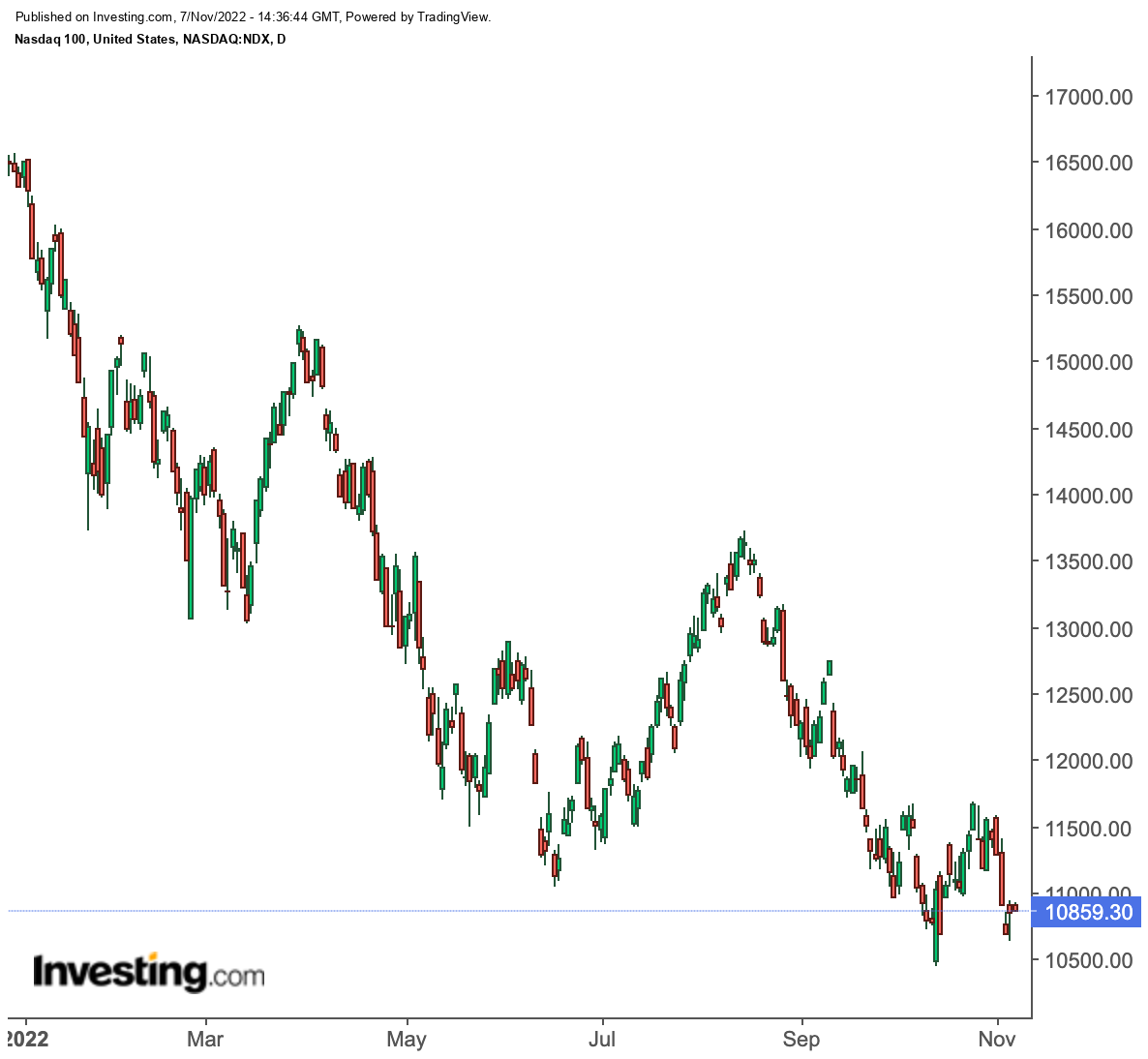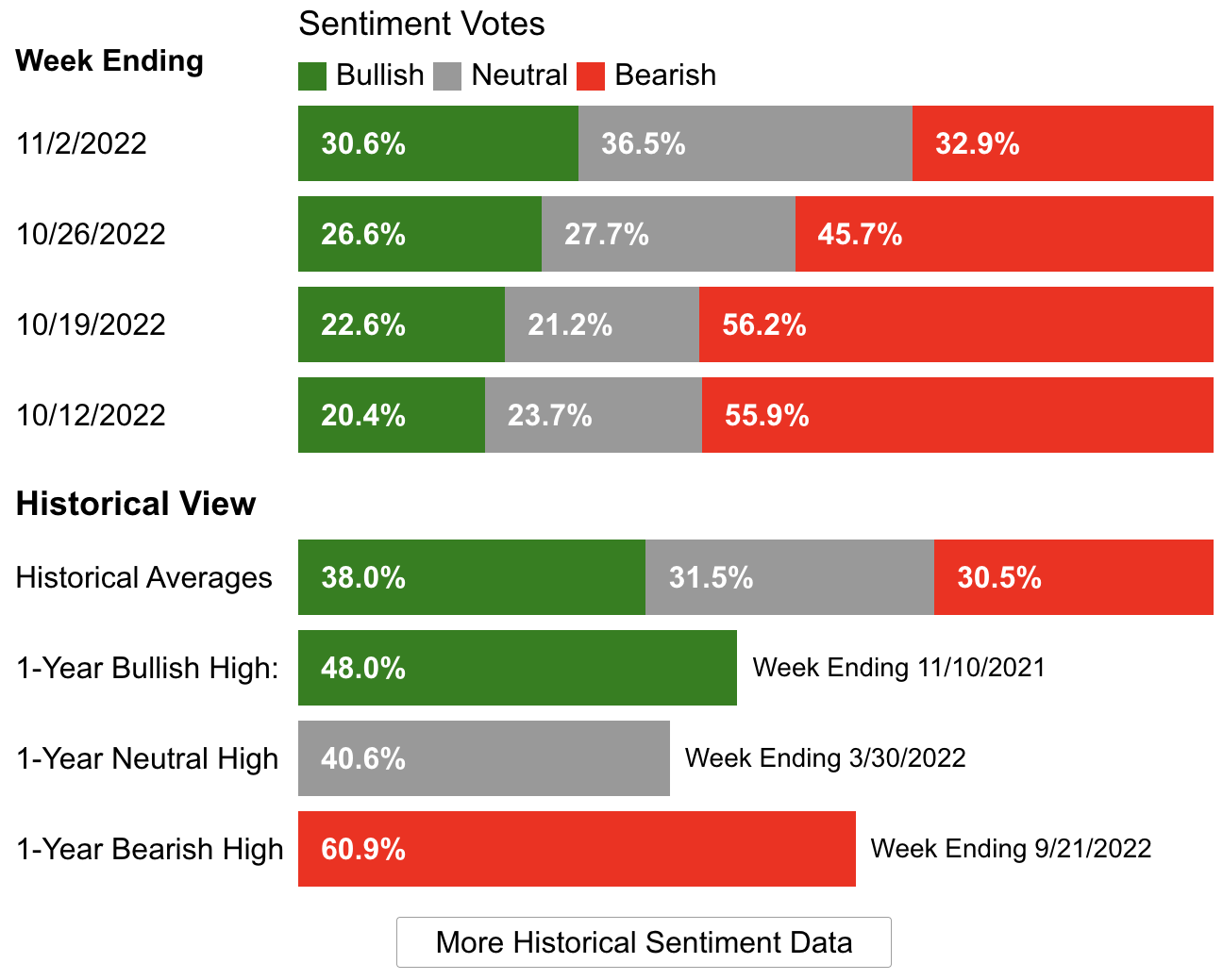- November has been the best month of the year for U.S. stocks counting since 1950
- AII investor sentiment has improved—although it remains below the historical average
- However, 2022 keeps adding signs that it may be one of the worst years yet on record
From a historical point of view, November is one of the best months of the year. Over the last 39 years, the S&P 500 has risen 62% of the time, for an average gain of +0.82%, on the 11th month of the year.
Moreover, if we take the S&P 500 since 1950, November is generally the best month of the year. However, since 2001, it has been the second-best.
November usually starts well, with the U.S. benchmark index rising in the first five days, and then takes it easy until just before Thanksgiving. Here are some historical stats for the month:
- Over the last ten years, the S&P 500 has risen on average +1.26% on a remarkable streak of 9 out of 10 times.
- Over the last 20 years, the Dow Jones Industrial Average posted positive results 70% of the time for an average +1.57% return.
- Over the last 50 years, the Dow Jones Industrial Average posted positive results 70% of the time for an average +1.99% return.
- Over the last 100 years, the Dow Jones Industrial Average posted positive results 63% of the time for an average +1.18% return.
As a curiosity, the worst November since 1950 was in 1973 when the S&P 500 fell -11.39%.
The best November since 1950 was 2020, with an appreciation of +10.75%.
54 Falls of 1% or More
Despite the positive seasonality, the S&P 500 fell -2.50% on November 2nd. This marks its 54th drop of -1% or more so far this year. You'd have to go back to 2009 to see something similar, and there are still two months to add to that number.
If we take the S&P 500 since 1928, 2022 ranks 12th in terms of years with the greatest number of declines of -1% or more. The eleven years ahead are:
- 1931 (97)
- 1932 (95)
- 1933 (75)
- 2008 (75)
- 2002 (72)
- 1930 (70)
- 1974 (67)
- 1938 (67)
- 1937 (62)
- 1934 (59)
- 2009 (55)
Nasdaq Within Striking Distance of Yet Another Grim Milestone
If the Nasdaq were to close lower this quarter on the red, it would imply its four quarterly declines in a row.

This would equal the worst streak of quarterly losses (in terms of duration) in the last 51 years.
The Intraday Effect in 2022
It turns out that if we had only traded the S&P 500 intraday so far this year, i.e., buying at the open and closing before the bell, the return would have been -1.9%.
Yes, the figure is not a rocket in itself because it represents losses. Still, the tremendous thing is that this loss is symbolic when compared with the loss accumulated by the index over the same period, which is more than ten times.
Investor Sentiment (AAII)
The bullish sentiment (expectations that stock prices will rise over the next six months) increased by 4% to 30.6% but remained below its historical average of 38% for the 50th consecutive week.
The bearish sentiment (expectations that stock prices will fall over the next six months) fell 12.8% to 32.9% and remains above its historical average of 30.5%.

Source: AAII
Stocks Exposed to China
As China's economy keeps underperforming, risks for companies with large exposure to the Asian giant keep mounting. Thus, investors should do strict due diligence before taking a position in such companies for the time being.
Below, you will find the list of S&P 500 companies with at least 20% of exposure to China, according to S&P Global Market Intelligence data, with their respective exposures:
- Monolithic Power Systems (NASDAQ:MPWR): 55.5%
- Texas Instruments (NASDAQ:TXN): 53.5%
- Estée Lauder Companies (NYSE:EL): 33%
- Applied Materials (NASDAQ:AMAT): 32%
- KLA Corporation (NASDAQ:KLAC): 29%
- ON Semiconductor Corporation (NASDAQ:ON): 28.5%
- Qorvo (NASDAQ:QRVO): 27.5%
- Amphenol (NYSE:APH): 27%
- Nvidia (NASDAQ:NVDA): 26%
- Tesla (NASDAQ:TSLA): 24.5%
- Western Digital (NASDAQ:WDC): 24%
Disclosure: The author currently does not own any of the securities mentioned in this article.
